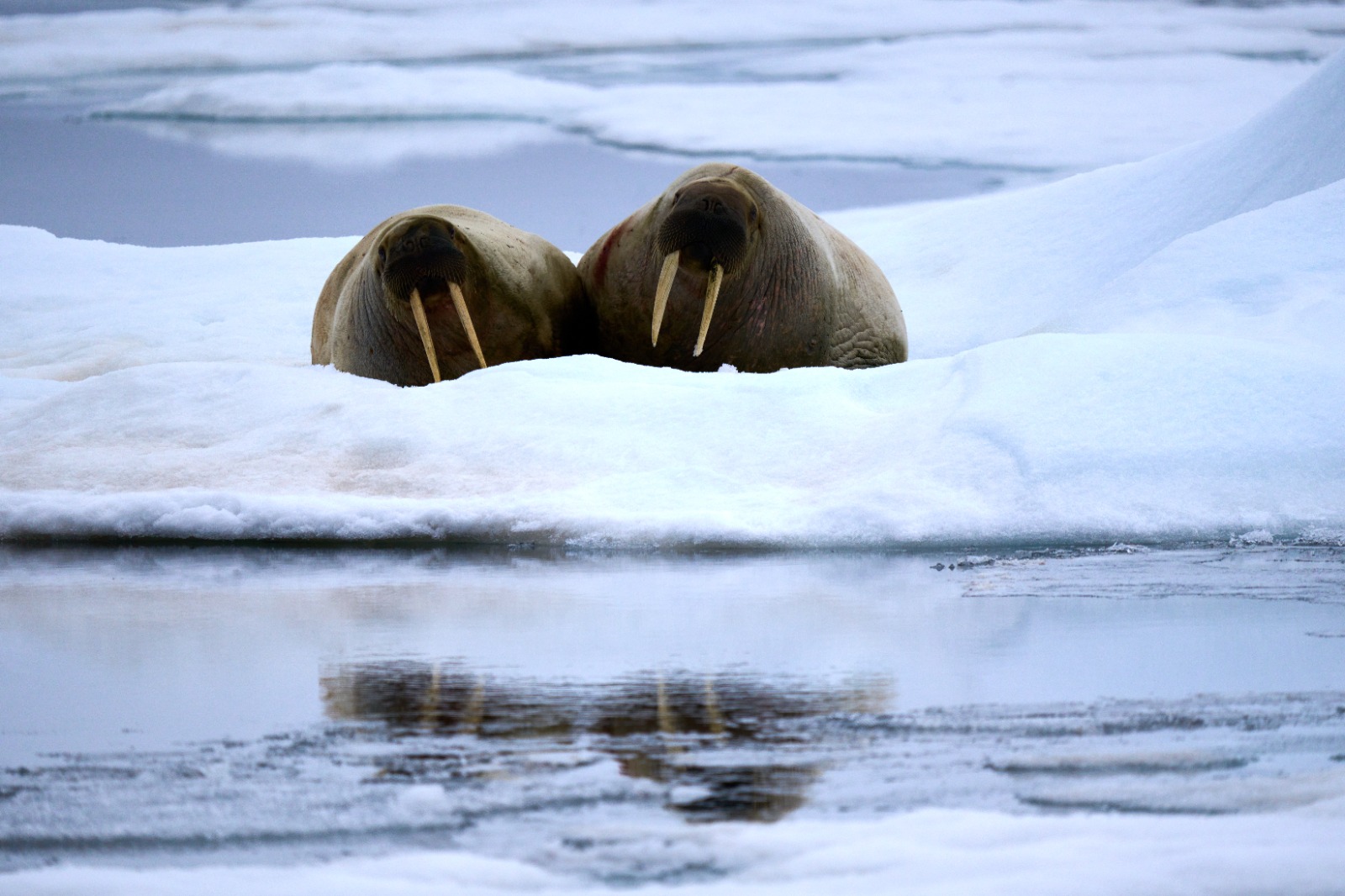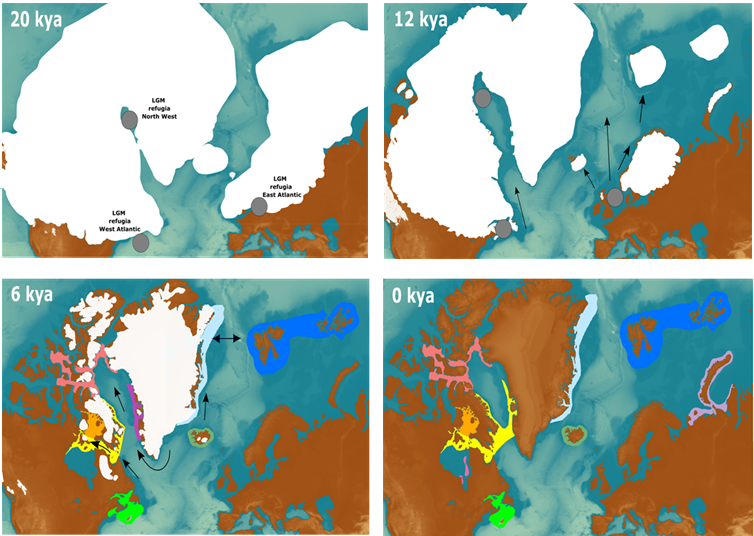Atlantic walrus more vulnerable than ever
As a result of climate change and increasing disruption of their habitats, the Atlantic walrus is more vulnerable than ever. This is revealed by research conducted by PhD candidate Emily Ruiz Puerta from the University of Groningen, in collaboration with scientists from the University of Copenhagen and the University of Lund. In their study, published today in the scientific journal Proceedings of the Royal Society B, the researchers call for better protection of walruses and other endangered species in Arctic seas.
Text: Marjolein te Winkel
Atlantic walruses inhabit Arctic coastal areas with open water: in the Hudson Bay, along the coasts of Greenland and Svalbard, and in the Canadian Foxe Basin area. They spend a significant amount of time in the water, searching for mussels, snails, and lobsters.
During the last ice age, approximately 27,000 to 19,000 years ago, the Arctic region was covered with thick ice sheets. As a result, walruses migrated to southern areas with ice floes and open water.

Their own set of genes
In her research, Ruiz Puerta reconstructed how walruses moved north during the period following the last ice age (the Last Glacial Maximum) using ancient DNA analysis. She used ancient DNA obtained from tusks and bones of walruses that were thousands of years old, covering extinct and extant populations. Her research shows that around 20,000 years ago, walruses had settled in three different locations, with each population having its own set of genes. As the ice retreated further, walruses moved to northern locations, including Iceland, Canada, and Greenland. This genetic distinction is also evident in the genes of each population, as Ruiz Puerta demonstrates.
The genetic distinction between the various walrus populations is remarkable, as Ruiz Puerta explains. "Normally, you would only see this pattern of new mutations in mammals if you observed them over a very long period, spanning millions of years. Now, we see clear differences in the DNA of different populations within thousands of years. This means that walruses are adapting quickly to new conditions."

More vulnerable than ever
Considering the current climate change and its impact on walrus habitats, one might think that rapid adaptation to these changes could be positive. However, Ruiz Puerta argues otherwise. "Current populations are small because the animals were heavily hunted for their tusks well into the previous century. This can make a population so vulnerable that it could go extinct."
This is also what happened to the Icelandic walrus population in the Middle Ages, as revealed by Ruiz Puerta's research. "Compared to other populations, that population had less genetic diversity. Additionally, they were heavily hunted during that time, and the environment was warming. These factors together led to the disappearance of Icelandic walruses."
Today, the remaining populations of Atlantic walruses are more vulnerable than ever due to a combination of Arctic warming, and habitat disruption. "There is less sea ice, which is crucial for walruses. Furthermore, they have limited opportunities to migrate to other areas due to human activities, such as Arctic shipping, resource extraction, and increasing tourism," explains Ruiz Puerta.

Better protection
Better protection is essential for the survival of Atlantic walruses. "We want to emphasize the importance of tightening current policies to prevent further endangerment of walruses. This means reducing large-scale activities like shipping, resource extraction, and tourism in this area. Additionally, more measures are needed to combat climate change. This requires global efforts."
In addition to the species' survival, the protection of the Atlantic walrus is also crucial for the indigenous population of the Arctic, the Inuit. They have lived in the polar region for thousands of years, but preserving their traditions has become increasingly challenging, especially in the past century. "The indigenous people have always hunted walruses," says Ruiz Puerta. "For meat, but they also used the tusks and other bones. Although it is known hunting's impact was strong during the medieval period, current hunting by Arctic Indigenous people is mainly for food consumption. Moreover it is known that this people and its culture is heavily attached to walrus availability. To protect the traditions of the indigenous population, it is important to also protect their environment and the animals they coexist with."
Read More
The paper Holocene deglaciation drove rapid genetic diversification of Atlantic walrus can be found in the scientific journal Proceedings of the Royal Society B.
Emily Ruiz Puerta is conducting her doctoral research at the Groningen Institute of Archaeology, part of the Faculty of Arts.
Read more: Traditional Knowledge and Western Science Converge in the Arctic
| Last modified: | 24 April 2024 4.00 p.m. |
More news
-
22 April 2025
Liekuut | The United States has always been less democratic than we think
The ferocity with which Donald Trump is eroding American democracy may seem unprecedented. Presidents have used their power to issue executive orders in the past, but not at the pace set by Trump. What if the US is less democratic than we think?
-
12 March 2025
Breaking news: local journalism is alive
Local journalism is alive, still plays an important role in our lives and definitely has a future. In fact, local journalism can play a more crucial role than ever in creating our sense of community. But for that to happen, journalists will have to...
-
11 March 2025
Student challenge: Starting Stories
The Challenge Starting Stories dares you to think about the beginning of recent novels for ten days.
